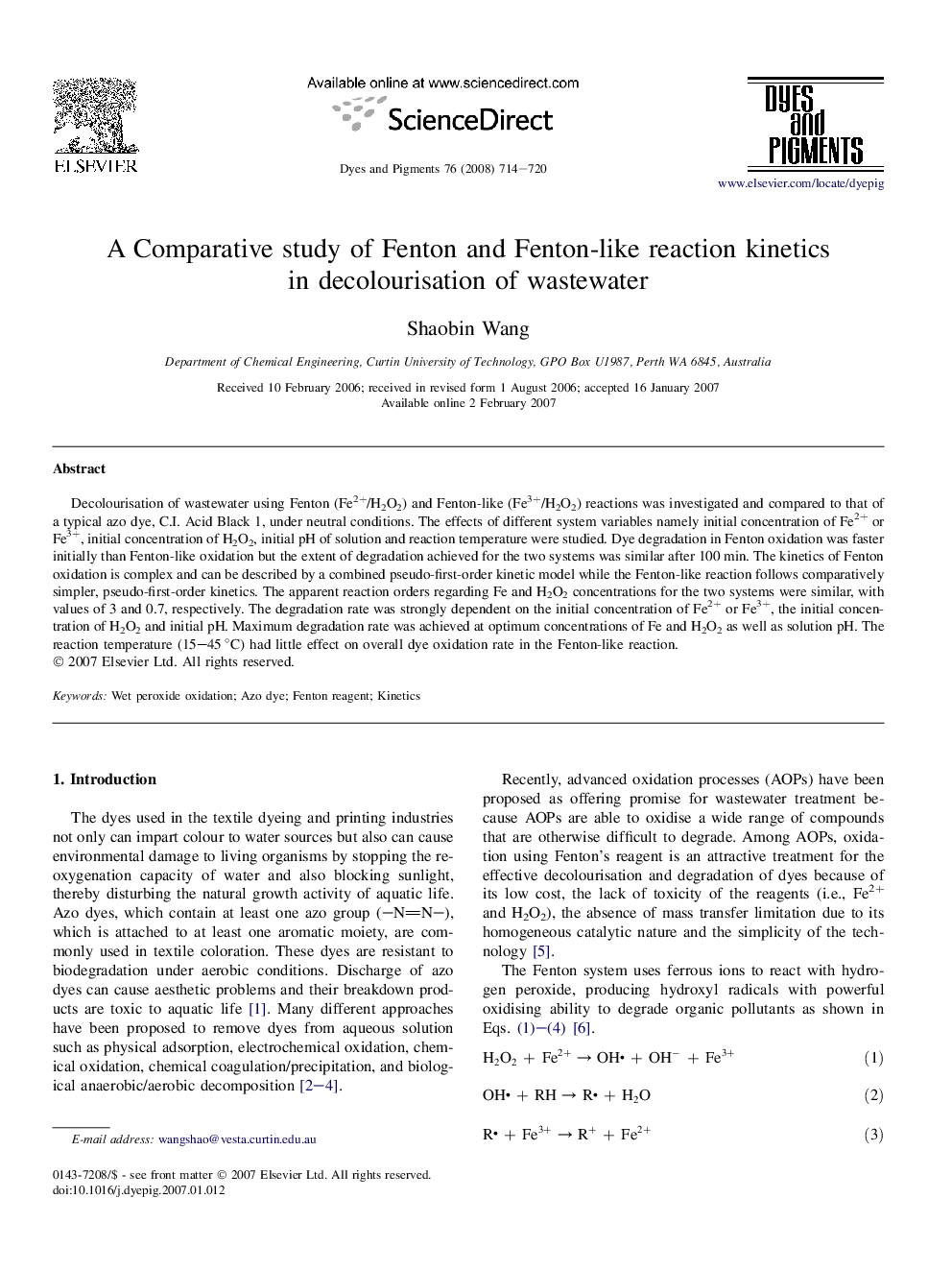| Article ID | Journal | Published Year | Pages | File Type |
|---|---|---|---|---|
| 177790 | Dyes and Pigments | 2008 | 7 Pages |
Decolourisation of wastewater using Fenton (Fe2+/H2O2) and Fenton-like (Fe3+/H2O2) reactions was investigated and compared to that of a typical azo dye, C.I. Acid Black 1, under neutral conditions. The effects of different system variables namely initial concentration of Fe2+ or Fe3+, initial concentration of H2O2, initial pH of solution and reaction temperature were studied. Dye degradation in Fenton oxidation was faster initially than Fenton-like oxidation but the extent of degradation achieved for the two systems was similar after 100 min. The kinetics of Fenton oxidation is complex and can be described by a combined pseudo-first-order kinetic model while the Fenton-like reaction follows comparatively simpler, pseudo-first-order kinetics. The apparent reaction orders regarding Fe and H2O2 concentrations for the two systems were similar, with values of 3 and 0.7, respectively. The degradation rate was strongly dependent on the initial concentration of Fe2+ or Fe3+, the initial concentration of H2O2 and initial pH. Maximum degradation rate was achieved at optimum concentrations of Fe and H2O2 as well as solution pH. The reaction temperature (15–45 °C) had little effect on overall dye oxidation rate in the Fenton-like reaction.
